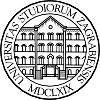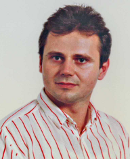
Nenad Antonić
Projects


Microlocal defect tools in partial differential equations
- Croatian science foundation (November 2018–October 2022)
- Project leader: Nenad Antonić
- Collaborators: Marko Erceg, Ivan Ivec, Darko Mitrović, Andrej Novak, Ivana Vojnović
- Partial differential equations are certainly one of the most successful mathematical models for understanding various processes not only in continuum physics, but in other branches of sciences and engineering. While there is no general core theory of partial differential equations, a class of methods based on various notions of weak convergence has emerged, being applicable for solving large classes of partial differential equations as well as investigating other relevant questions, either intrinsic to this theory, or pertaining to its applications in other fields of science and technology. Compactness by compensation and Young measures were the tools for better understanding of what happens on the limit developed almost half a century ago. Microlocal defect tools, like microlocal defect measures (H-measures), semiclassical measures, one-scale H-measures, H-distributions, and their variants, are the tools being developed recently for the same purpose. Their further development, and applications in the field of partial differential equations is the primal goal of the research within this project. We shall study, in particular, the propagation of microlocal energy density of certain equations, as well as the well-posedness and numerical solutions of heterogeneous conservation laws with or without a stochastic forcing, for which certain variant of microlocal defect tools should be constructed and applied. Among all equations of our interest, there are also equations that change their type (e.g. due to a high heterogeneity of the permeability in transport processes), which cause particular difficulties. Another way to study such equations is by re-writing them in the form of Friedrichs systems, a class of first order systems which encompasses most of the linear equations of mathematical physics, like classical elliptic, parabolic and hyperbolic equations, but also the equations that change their type. At the same time they are quite convenient for numerical analysis.
Anisotropic distributions and H-distributions
- Bilateral Croatian-Austrian project (2018–2019)
- Project (co)leaders: Nenad Antonić and Michael Kunzinger (Universität Wien)
Microlocal analysis, partial differential equations and applications to heterogeneous materials
- Bilateral Croatian-Serbian project (2016–2017)
- Project (co)leaders: Nenad Antonić and Stevan Pilipović (Univerzitet u Novom Sadu)
Multiscale methods and calculus of variations
- Bilateral Croatian-Montenegrin project (2015–2016)
- Project (co)leaders: Nenad Antonić and David Kalaj (Univerzitet Crne Gore)
Micro-local defect functionals and applications
- NEWFELPRO - Marie Curie FP7 COFUND (Dec 2014–Nov 2015)
- Project leader (visitor): Darko Mitrović
- Scientist in charge (host): Nenad Antonić
Weak convergence methods and applications
- Croatian science foundation (July 2014–June 2018)
- Project leader: Nenad Antonić
- Collaborators: Krešimir Burazin, Marko Erceg, Ivan Ivec, Martin Lazar, Nedžad Limić, Marin Mišur, Darko Mitrović, Boris Pawilowski, Ivana Vojnović, Marko Vrdoljak
- Weak convergences are the foundation of most successful methods in the investigation of partial differential equations today. The approach known as Tartar's programme proved particularly convenient for partial differential equations modelling physical laws; the basic assumption being that weak convergences of sequences of solutions model the transition from microscale to macroscale. Of importance are also mathematical objects being, in a generalised sense, accumulation points of weakly convergent sequences, such as defect measures or H-measures. The research will be directed towards improving the existing weak convergence methods, designing new mathematical objects for that purpose, as well as developing new methods, with particular attention paid to their applications to practical problems. Problems known as homogenisation are tied to properties of mixtures of materials, with important applications in optimal design. Problems related to evolutionary equations and their admissibility conditions mainly concern transport problems in free and porous media, where it is sometimes natural to include continuous time random walk variables in the model. Such problems sometimes also lead to fractional derivative equations. Some problems are related to hyperbolic conservation laws and the propagation and interaction of singularities. High-frequency waves corresponding to solutions of hyperbolic systems are governed by ODEs, allowing for final interpretation as particles. Particularly interesting are situations where the equation changes its type (like transonic fluid flow), motivating our interest in Friedrichs systems. Further results for semilinear systems could open a new approach to the Maxwell-Dirac system, with potential applications in quantum field theory. Practical computation of coefficients in specific applications is also important; as the unknown functions have the domain in multidimensional space, quite often more efficient numerical methods have to be developed.
Weak convergences and measures in PDEs
- BIZKAIA::XEDE - Marie Curie FP7 COFUND (Oct 2013–Dec 2013)
- Project leader (visitor): Nenad Antonić
- Scientist in charge (host): Enrique Zuazua (BCAM)
Oscillatory solutions of partial differential equations
- Croatian Ministry of Science, Education and Sport (Jan 2007–Dec 2013)
- Project leader: Nenad Antonić
- Collaborators: Krešimir Burazin, Marko Erceg, Ivan Ivec, Martin Lazar, Marko Vrdoljak
- Consultant: Luc Tartar
- Many effects in natural sciences include multiple scales which lead to mathematical models described by (nonlinear) differential equations in heterogeneous media. Fundamental laws valid at the microscale are usually known, and it is important to understand which equations are valid at the macroscale. The existing mathematical models are mainly based on various notions of weak convergence. The issues known under the name of homogenisation are connected to the properties of mixtures of two or more materials. It is of interest to determine the precise bounds for qualitative physical parameters of the mixture (the effective coefficients), and whether the properties of mixtures obey the same type of physical law as the properties of components (which is not the case for memory effects). The second set of questions is related to the calculus of variations: nonconvex optimisation and microstructures, with intended description of nonlinear elastic and magnetic materials, as well as the related questions of optimal design. The technology has recently reached the maturity, so it is possible to construct nanodevices, where numerical modelling depends on the averaging by microstructure. The third aspect concerns hyperbolic conservation laws and admissibility conditions for shocks, as well as the propagation and interaction of singularities (oscillations). The microlocal analysis (H-measures) is being used as a tool here. It is possible to apply the mentioned methods for questions of turbulence in fluids and statistical mechanics. Practical computation (on computers) of coefficients in specific applications is of particular importance. As the domain of unknown functions is contained in multidimensional spaces, it is often needed to develop efficient numerical methods. The described research is a part of a worldwide trend; within the proposed project we shall join the development of new mathematical techniques and their wider applications in the modelling of physical processes.
Center of Excellence for Applications of Mathematics
- DAAD (2003–2016)
- Project leader (Universität Duisburg-Essen): Heiner Gonska
- Coordinator for University of Zagreb: Nenad Antonić
Mathematical modelling of geophysical phenomena
- Croatian Ministry of Science, Education and Sport (Mar 2008–Dec 2013)
- Project leader: Marko Vrdoljak
- Collaborators: Nenad Antonić, Tomi Haramina, Mladen Jurak, Martin Lazar
- The goal of this project are applications of modern mathematical tools to the study of geophysical phenomena, which are often described by partial differential equations. In the transport of energy from the microscopic/mesoscopic to macroscopic scale in fluid dynamics, important role is being played by the turbulence effects. A study of an analytic model of thermohaline circulation with constant coefficients in the Adriatic gives an estimate on lateral turbulent friction coefficients, which could be significantly enhanced by the application of perturbative techniques to the model with variable coefficients. New mathematical results related to geophysical models for turbulent processes will be applied to particular localities in the Adriatic, and obtained results could be compared to available measurements. The mathematical model of double-diffusion process describing the mixing of cold fresh water with the warm sea will be studied; the same mechanism could be applied to the transport of pollutants in underground waters as well. Problems with the strong nonhomogeneity of medium, where the classical analytical and numerical procedures are not feasible, are of particular interest. Such problems are approached within the theory of homogenisation; by its application we arrive to the formulation of effective parameters via the solutions to auxiliary boundary value problems, providing a sound foundation for numerical treatment. In particular cases (e.g. iterated laminates) this method gives explicit formulas for effective parameters. We shall investigate the applicability of homogenisation in inverse problems of geophysical interest. The results on continuous dependence of solutions on the coefficients in the equation, given by that method, together with the optimal control theory, will be the basis for our approach to such problems. The homogenisation method is also crucial in inferring the good effective models for naturally nonhomogeneous porous media. The numerical treatment of models for transport of mass and energy within certain geophysical system (singularly perturbed equations of convection-diffusion) will be primarily based on the methods of finite elements and finite volumes, with a particular technique of discretisation for the convective term in the equation.
Functional analysis methods in mathematical modelling
- Bilateral Croatian-Serbian project (Jan 2011–Dec 2012)
- Project leaders: Jelena Aleksić, Marko Vrdoljak
- Collaborators: Nenad Antonić, Krešimir Burazin, Nataša Krejić, Stevan Pilipović